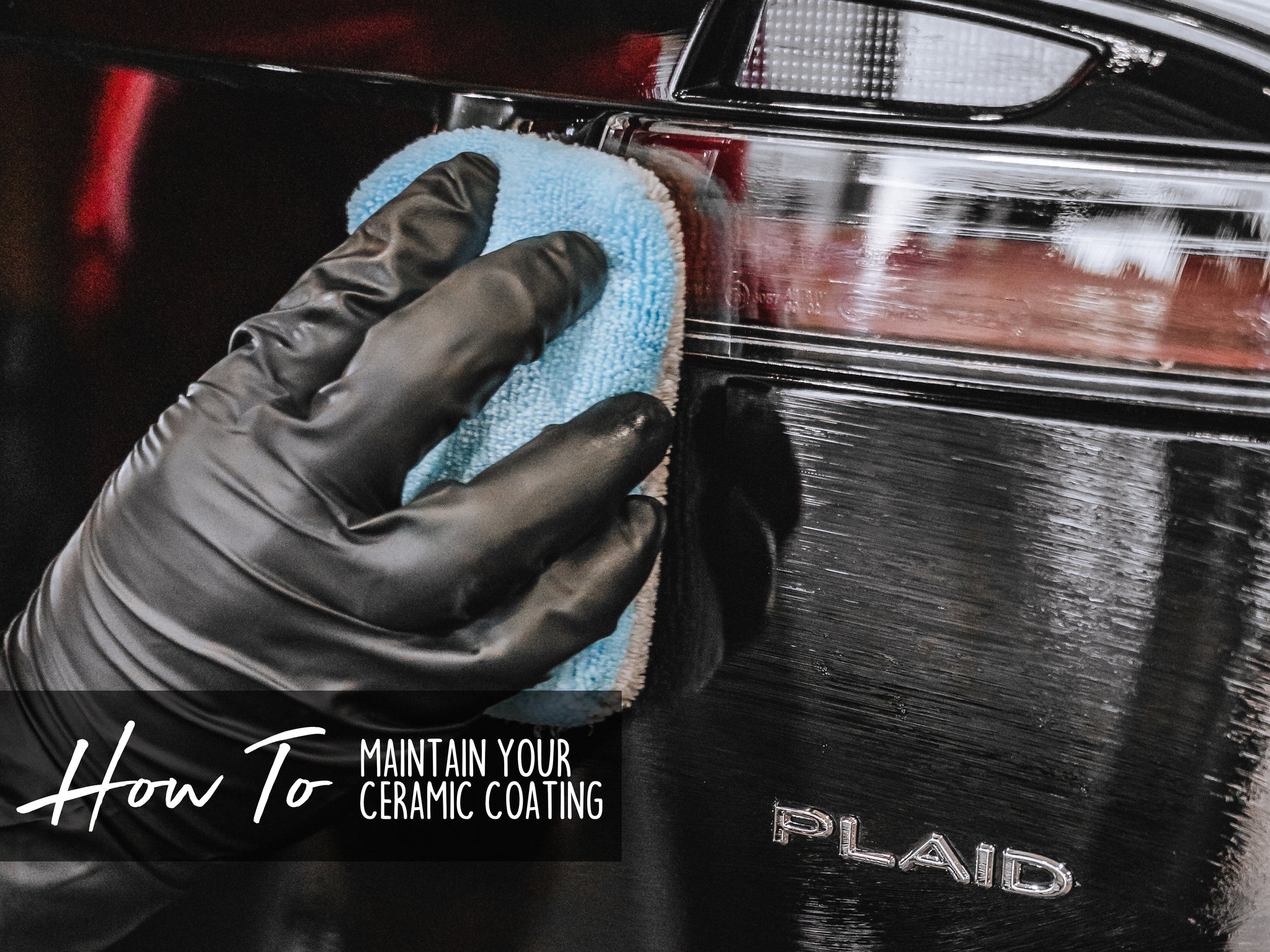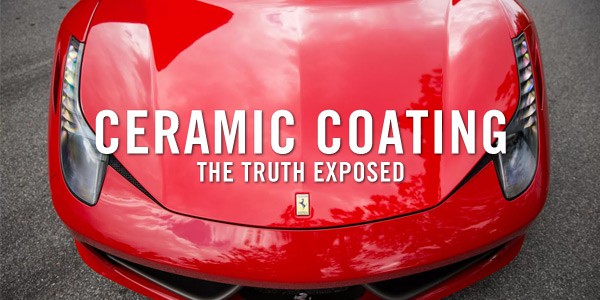The Ultimate Guide to Understanding Ceramic Coating and Its Advantages
Wiki Article
The Function of Ceramic Finishing in Safeguarding Your Cars and truck's Paint From Environmental Damage
Ceramic layer has emerged as an innovative solution for cars and truck proprietors seeking to protect the honesty of their car's outside. As we discover the subtleties of ceramic finishing, it comes to be evident that the choice to execute this safety action could substantially affect your vehicle's durability and visual.What Is Ceramic Layer?
Ceramic covering is a sophisticated liquid polymer put on the outside surface areas of a lorry, made to provide a resilient layer of security for the paint. This ingenious remedy forms a chemical bond with the car's factory paint, creating a resistant and hydrophobic guard. The coating includes nanoparticles that fill out the microscopic imperfections in the paint, resulting in a smooth surface that enhances radiate and gloss.Usually, ceramic finishes are readily available in numerous formulas, permitting different levels of protection and long life. While some items can last for a number of months, others use security for a number of years, depending upon the thickness of the application and environmental factors. The application procedure calls for thorough prep work, consisting of washing, decontaminating, and brightening the automobile's surface area to make sure ideal bond of the finishing.

Advantages of Ceramic Finish
One of the primary advantages of applying a ceramic finishing is the phenomenal security it uses to auto paint. This sophisticated finishing forms a durable layer that shields the car's surface area from a selection of environmental hazards, consisting of UV rays, acid rain, bird droppings, and tree sap. By supplying this robust protection, ceramic coverings dramatically minimize the risk of fading and etching, preserving the auto's aesthetic allure in time.
In enhancement to protection, ceramic finishes are renowned for their hydrophobic residential properties, which fend off water and dust, making it easier to preserve a tidy car. This self-cleaning result reduces the frequency of cleaning, conserving both time and resources. Ceramic layers enhance the depth of the paint's gloss, resulting in a lively and polished appearance that raises the general appearance of the lorry.
Another noteworthy advantage is the long life of ceramic layers. Unlike traditional waxes or sealers that call for frequent reapplication, ceramic coverings can last a number of years, using a cost-effective service for automobile proprietors looking for long-lasting security. Overall, investing in ceramic covering results in improved toughness, minimized upkeep, and continual visual charm for automobile paint.
Exactly How Ceramic Coating Works
A ceramic covering operates through a chemical bonding procedure that develops a safety layer on the automobile's paint surface. This ingenious service utilizes innovative nanotechnology, where tiny bits of silica are suspended in a liquid kind - ceramic coating. Upon application, these fragments bond with the manufacturing facility paint, developing a resilient and hydrophobic layer that enhances the lorry's surface areaThe primary element of ceramic finishes, silicon dioxide (SiO2), adds to the covering's strength and strength. When treated, the covering changes right into a hard, glass-like finish that guards the paint from environmental contaminants such as dust, UV rays, bird droppings, and tree sap. This molecular bond leads to a surface that is not just resistant to scrapes however also less complicated to clean up, as dirt and gunk are less likely to stick.
Additionally, the hydrophobic buildings of ceramic finishings cause water to grain and slide off, reducing the opportunities of water areas and natural resource. This protective informative post obstacle properly prolongs the life of the paint and preserves the lorry's visual appeal, providing cars and truck owners a lasting service for paint defense.
Application Process of Ceramic Layer
When considering the application of ceramic covering, preparation is crucial to attaining optimum outcomes. Any imperfections or scrapes ought to be dealt with at this stage, as the finishing will bond with the surface underneath.

Ceramic finishing is then applied in small sections, generally using an applicator pad. It is essential to operate in even strokes, ensuring uniform insurance coverage. The coating needs to be permitted to heal for a defined time, which can vary depending on the item made use of. After the first application, a high-grade microfiber towel is utilized to buff the surface, enhancing gloss and making certain a smooth coating. Lastly, the car ought to be delegated cure in a regulated setting to enable the finish to completely bond with the paint.
Long-Term Upkeep and Care
Accomplishing a successful ceramic layer application sets the structure description for long-lasting defense, however correct maintenance is essential to protecting its advantages. Routine cleaning is important; making use of a pH-neutral automobile hair shampoo will aid maintain the finish's integrity without triggering damages. Prevent automated auto washes that usage abrasive materials, as they can jeopardize the coating's surface.
In addition, using a ceramic finishing upkeep spray can enhance the existing layer, offering an extra increase in protection and sparkle. It's advisable to do this every 3 to six web link months, depending upon ecological exposure.
Lastly, car park in shaded locations or using automobile covers can protect against prolonged exposure to unsafe UV rays and environmental contaminants, even more expanding the life of your ceramic coating. By adhering to these maintenance methods, you can guarantee your lorry's finish remains protected and visually appealing for years to find.
Verdict
In recap, ceramic coating acts as a crucial safety action for automotive paint, effectively securing vehicles from a variety of environmental risks. Its ability to create a robust hydrophobic barrier not just boosts visual charm however also substantially minimizes the frequency and intensity of maintenance required. The long-lasting nature of this innovative polymer highlights its value in preserving vehicle honesty and look, inevitably adding to a much more aesthetically attractive and resilient automotive coating.Ceramic layer is an innovative liquid polymer applied to the external surface areas of a car, designed to supply a long lasting layer of protection for the paint. Ceramic layers improve the depth of the paint's gloss, resulting in a vivid and refined look that elevates the total look of the vehicle.
A ceramic coating runs through a chemical bonding procedure that produces a protective layer on the lorry's paint surface.The primary component of ceramic finishes, silicon dioxide (SiO2), adds to the finishing's stamina and resilience.In recap, ceramic finishing serves as an essential protective procedure for automobile paint, efficiently securing vehicles from a variety of environmental dangers.
Report this wiki page